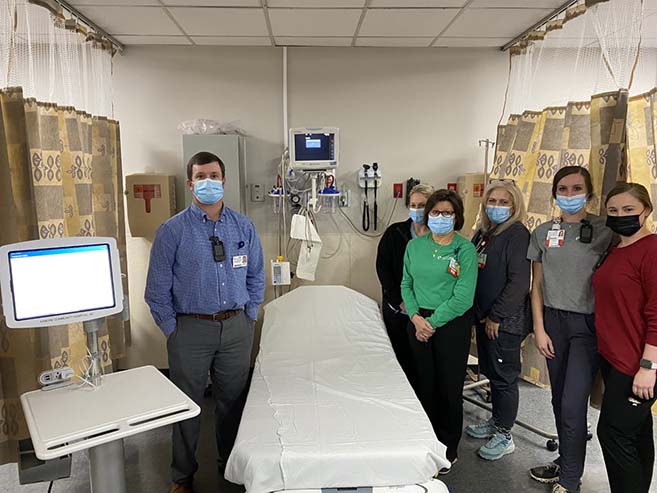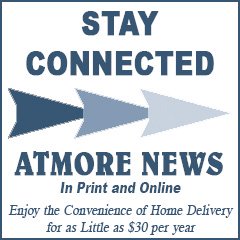ACH now offers stroke victims services of UAB neurologists

By DON FLETCHER
News Staff Writer
In the past, the 75 to 100 residents of Atmore and the immediate area who suffered strokes each year were stabilized at the local hospital and immediately transferred to another facility. That’s no longer the case.
Officials of Atmore Community Hospital (ACH) and Escambia County Healthcare Authority (ECHCA) announced this week that they have reached a contractual agreement with University of Alabama at Birmingham Hospital that gives stroke victims almost immediate access to a neurologist. The service, called Tele-Stroke, has been tested and is now in place.
“There is a cart in our [Emergency Department] that has a big iPad on it, with a large button,” explained ECHCA CEO Jeff Booth. “When an ambulance calls in that they have a potential stroke victim, our ED doctor or nurse will push that button, and within 10 minutes, under a contractual obligation, a trained neurologist MD from UAB will be online, connected with our ED doctor.”
The neurologist will have instant access to the patient’s medical records and imaging (CT scans, etc.), and a camera atop the ACH cart will allow the UAB specialist to virtually be in the room with the patient and the ED staff.
Suzanne McGill, director of nursing at ACH, pointed out that CT scans are one of the first diagnostic measures taken when a person believed to be suffering a stroke arrives at the hospital.
“The neurologist can immediately see our images,” she said. “Any time a patient comes in with symptoms of stroke, unless they have a compromised airway, they go straight to CT before anything is done. The UAB neurologist can see the images as quickly as they’re transmitted and can have the patient do different movements that will help tell if it is a stroke.”
Booth said Tele-Stroke provides immediate, top-level care that is cost-prohibitive to rural hospitals.
“No rural hospital can afford to pay a neurologist to be on staff 24-7,” he noted. “With a stroke, every minute counts; it’s killing brain cells. We believe the neurologist can be online faster than 10 minutes. We will hit the button before the ambulance gets to the hospital and hopefully have the neurologist online when the patient gets here.”
The new service also provides the patient’s family members with answers to questions that can be answered only by the attending physician.
“The family can talk with the specialist, maybe within 20 minutes after the patient gets here,” said Booth, who noted that probably more than half the patients who display stroke symptoms don’t need to be transferred to a certified stroke center.
ACH Administrator Brad Lowery said Tele-Stroke service would benefit those who are suffering a full-blown stroke, as well as those who are not in such dire straits.
“This will be huge for this community,” Lowery said. “Those who need to be transferred out will be transferred more timely and more appropriately because the UAB specialist is better able to recommend their level of care, which facility is appropriate for them. For those people who may not be having a stroke or having certain symptoms or circumstances, it would allow them to stay at this hospital.”
Plans are to expand the telemedicine agreement with UAB to include critical care and cardiac care, which is one of the most frequently needed services at ACH, especially with emergency patients and inpatients.
“We have cardiologists from out of town who see outpatients, and they make rounds here, but we don’t have that 24-7 coverage for inpatients,” Lowery said. “We want to make sure they’re safe; we don’t want them to have to wait three or four days until the cardiologist comes by. This will allow them to stay here when it’s appropriate.”
Booth said the new and planned telemedicine services are part of a long-term plan to improve healthcare in Escambia County.
“We have a vision for transforming healthcare in this county,” he said. “We’re trying to provide the same type care and great quality that people now go somewhere else for, but they don’t have to drive 45 minutes for.”
